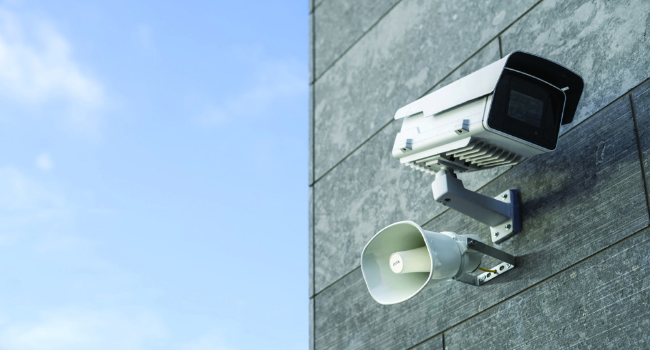
A 30,000 View
Cloud-based video: the journey and its future course
- By Martin Gren
- Mar 18, 2024
Today it seems like the cloud is everywhere. In the security industry, cloud-based video and access control solutions are certainly big trends. But how, and why, did the journey toward cloud-based video begin? And where is it headed?
The Right Elements, the Wrong Timing
When the first network camera—the AXIS NetEye 200—was launched in 1996, its performance was on par with the available bandwidth at the time; but the technology had a way to go to meet the needs of the security industry. At that time, dial-up networking typically took around 17 seconds to transmit a VGA image. While the capability was exciting, and the possibilities promising, the results were not ideal. Improvements were required.
The late 1990s saw the emergence of Software as a Service (SaaS), offered by Application Service Providers or ASPs, like Hotmail and RocketMail. At that point, using webcams with dial-up networking produced a slow stream that equated to a series of still images. Additionally, camera configuration was a challenge, so a better way of communication was required. Unfortunately, high-speed internet was still in its infancy, so it was too early to accommodate IP video.
Tech Advancement Spawns Viable Solutions
As we approached the new millennium, things were about to change. High-speed internet finally provided what was needed for network video success, especially for security and surveillance use cases. For Axis, this meant the introduction of a new breed of camera: the AXIS 2100 Network Camera. In addition to providing a direct network connection (no PC required) with the ability to operate as a standalone via LAN connection or modem, it was the first camera with VGA resolution at a good framerate (10 fps) and at a reasonable price. Accordingly, it was easy to configure and deploy—meeting user needs.
On the heels of these advancements, the first cloud-based video solution was introduced by Spanish telecommunications company Telefónica. The company pioneered a hosting plan that included the cost of the IP camera—and subscriptions were sold to small businesses. While profitability was encouraging, scalability issues forced Telefónica to discontinue the service. That set the stage for cloud video offerings and many Telcos followed suit. Most of them failed because their business models combined small business and residential sales under the same roof.
Pioneers Meet Heightened Expectations
It was not long before a second wave of hosted video startups decided to modify standard cameras and their firmware to connect them to the cloud. Dropcam and CameraManager were among two of these pioneering companies. Initially the challenge with cloud-based video was bandwidth, but the problem was solved as broadband became ubiquitous. And, until around 2008, standard (PAL or NTSC) resolution was acceptable, so the combination worked.
However, once flat HD TVs began to appear in living rooms, people expected better quality from surveillance cameras too. Fortunately, timing coincided with a new H.264 compression method, so better image quality with less noise was now possible. Later came smart compression methods such as Axis Zipstream technology.
With the emergence of cloud service providers like AWS, Azure and Google Cloud, businesses no longer had to make major investments in servers and other infrastructure. This was a huge step forward and enabled startups to provide cloud-based video solutions. Even better, these servers were often free of charge for upload since most traffic using the cloud are downloads. Cameras upload data continuously but download data rarely. Of course, uses and pricing models have since changed.
Ecosystem Poised to Elevate Video
Today, cloud video, better known as Video Software as a Service or VSaaS, generally means one of two things.
1. Cameras that are direct to the cloud.
2. A local server where the cameras are connected to the appliance, which is then managed through the cloud.
Either way, the popularity of VSaaS is being driven by some clear benefits, among them flexible storage, scalable systems and remote access.
So, what is next for cloud-based video beyond the obvious conveniences? A demand for higher-quality video and related data for AI models, computer vision applications and business intelligence—coupled with the ongoing evolution of today’s IP cameras with greater processing power and deep learning capabilities—is driving new innovative cloud platforms and hybrid architectures. What’s more, edge computing is creating opportunities whereby real-time actions occur at the edge and only meta data needs to be transferred to the cloud for storage and potentially deeper analysis via new cloud-based analytics.
A Positive Forecast for the Future
A symbiosis between technological elements is creating opportunities for hardware manufacturers, software developers, and system integrators—ultimately introducing new innovative solutions for end-users. Furthermore, these collaborations are driving new developments in cloud-based video.
The evolution over the past two decades has been significant and it’s pushing cloud-based video into the mainstream. Overall, it is fair to say that the haze has lifted and the future forecast for cloud solutions is bright and clear.
This article originally appeared in the March / April 2024 issue of Security Today.